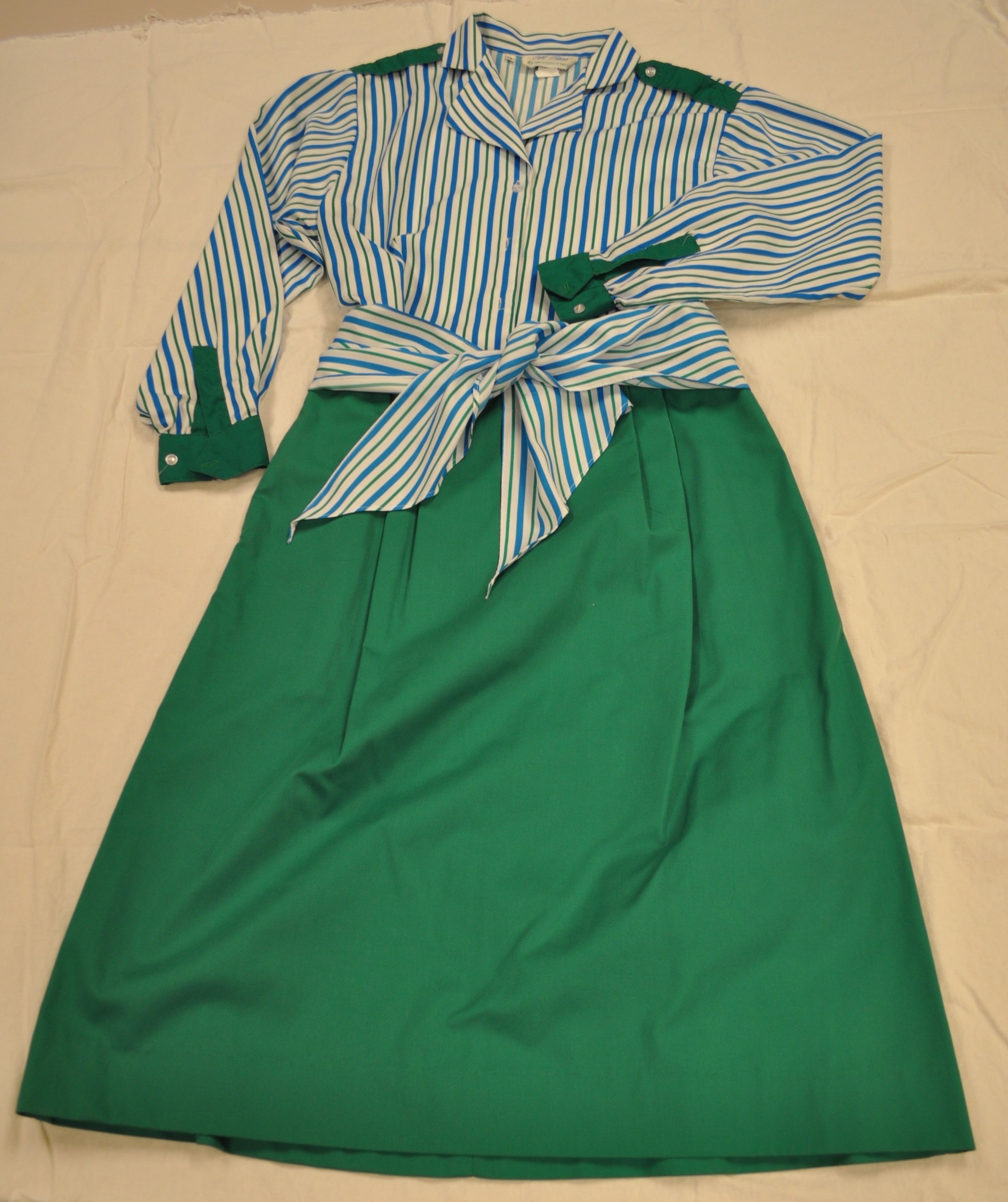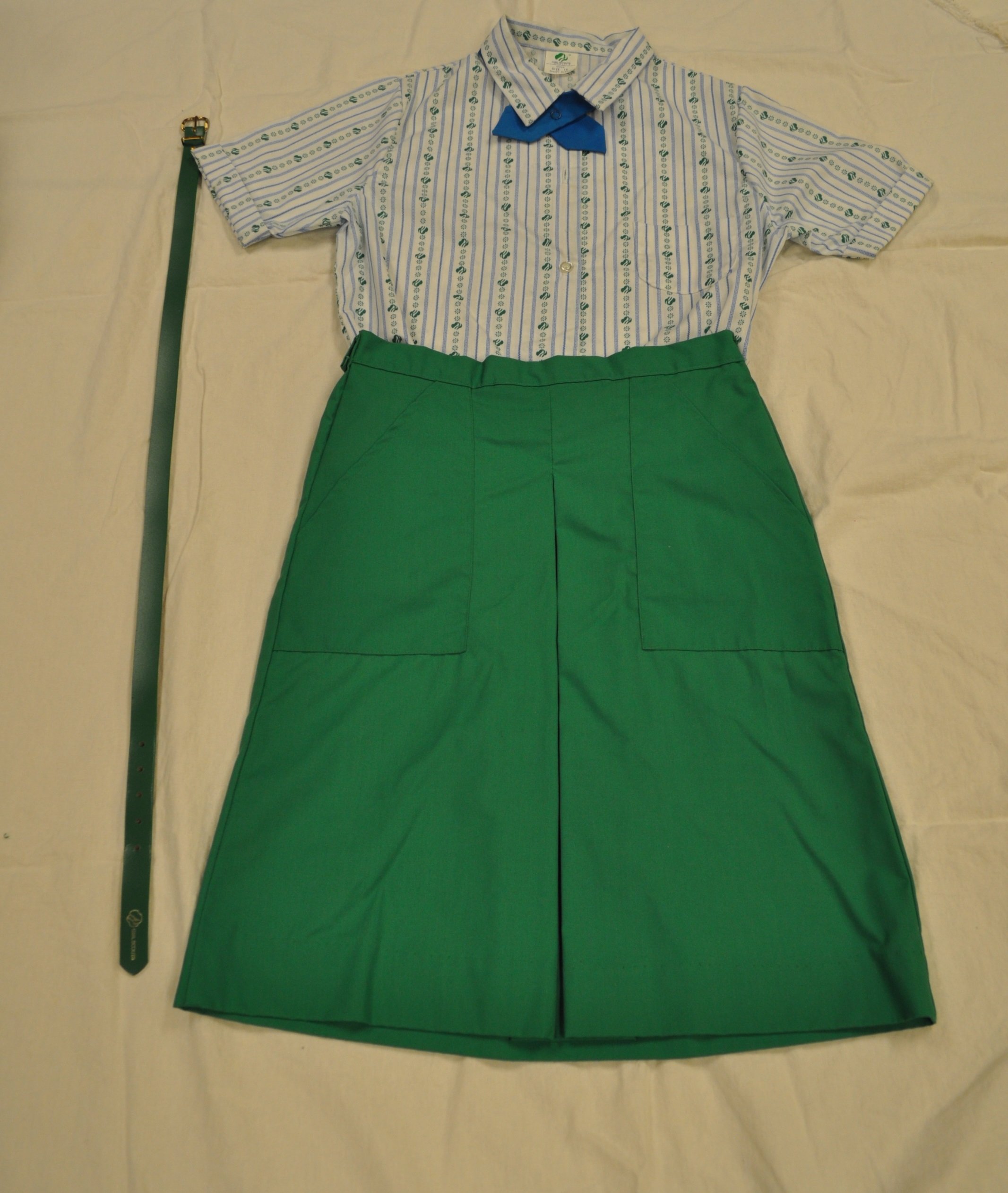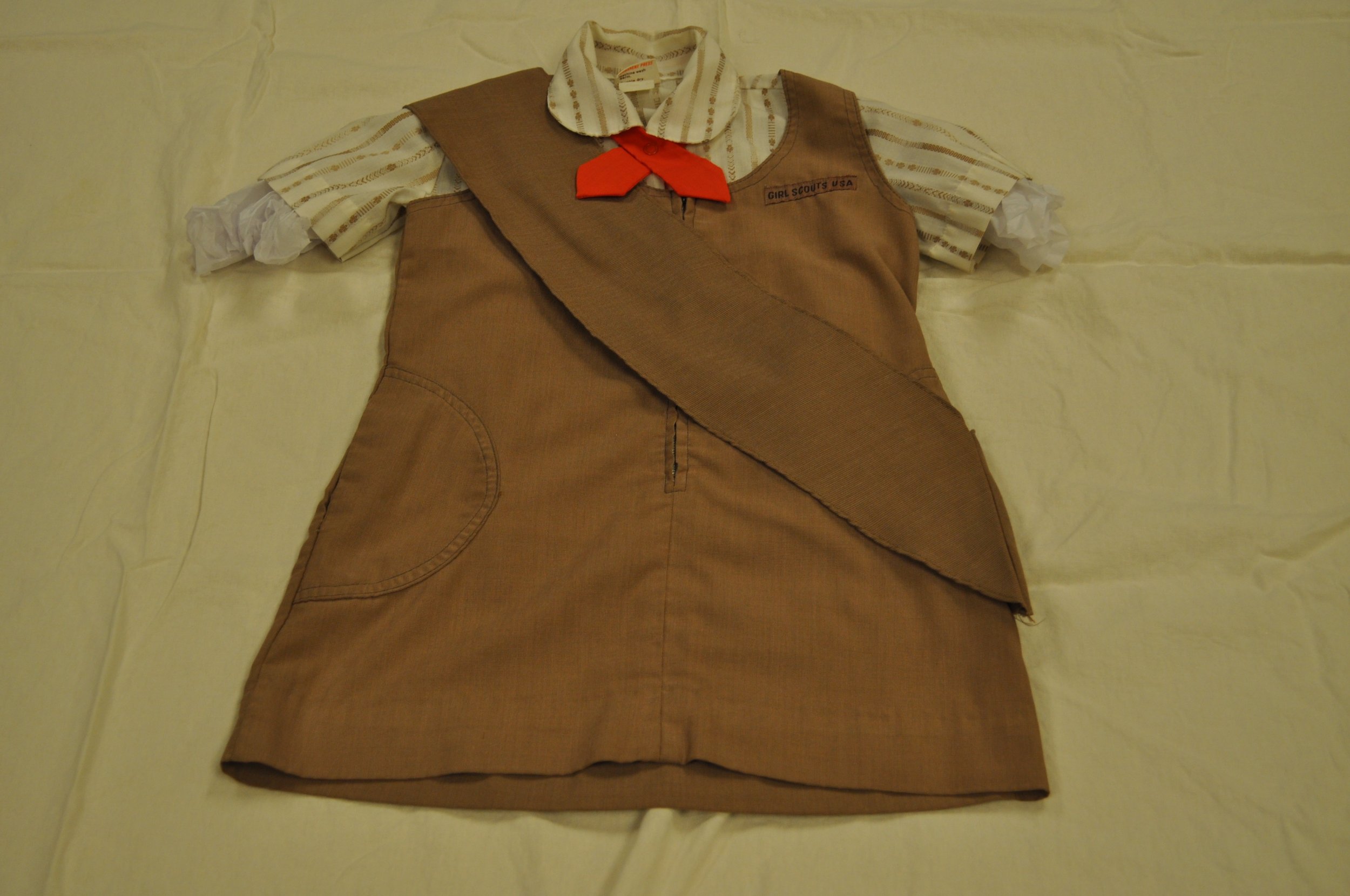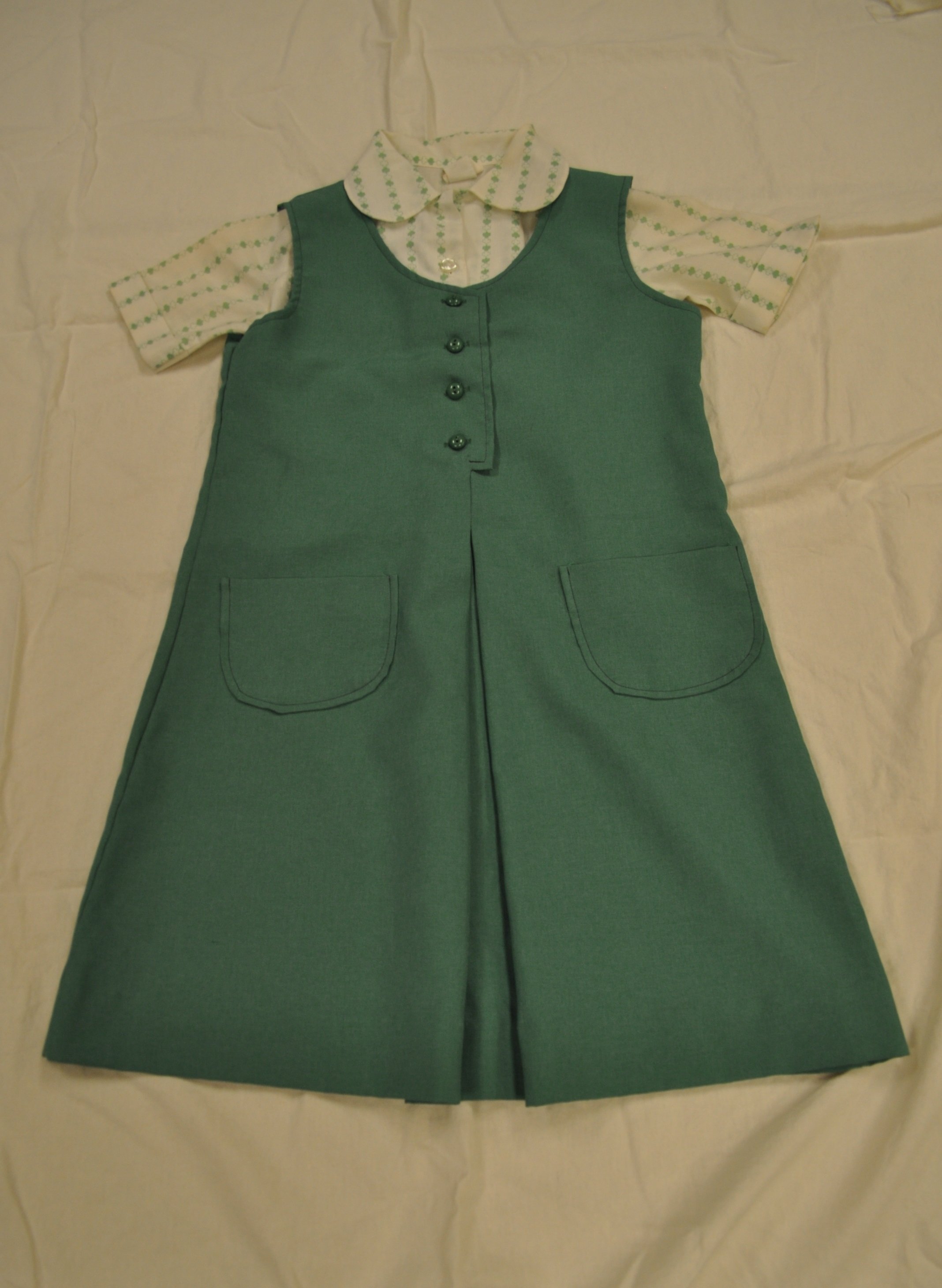The Ever-Evolving Styles of the Girl Scouts
Ever since the first troop was founded in 1912, the Girl Scouts of the USA has been a staple of girlhood for millions. The Girl Scout uniforms of today look almost nothing like the first uniforms commissioned by founder Juliette Gordon Low, but a look back at the various iterations of the uniform reveals it evolving alongside both the changing fashions of the time and the demands of the activities the Girl Scouts participated in.
The shelves and wardrobes of Minnetrista’s collection house 18 uniforms worn by Muncie Girl Scouts across more than 6 decades, showing this evolution within one community.
The earliest in Minnetrista’s collection dates to 1935— a gray-green skirt and shirt set with the Girl Scout “GS” stitched onto each point of the collar. Several now-iconic features of the Girl Scout uniform originated in the 1930s. As the beret became a fashionable accessory in the late 20s and early 30s, members began wearing them with their uniforms for the first time, and the style stuck! Additionally, the color green was first associated with the Girl Scouts in this decade. Prior uniforms had been blue or khaki. In 1938, separate groups were organized based on age: Brownie Girl Scouts, ages 7-9; Intermediate Girl Scouts, ages 10-13; and Senior Girl Scouts, ages 14-17. Along with this, adult leaders, for the first time, wore uniforms different from those of young troop members. These troop leader uniforms had longer skirts and adhered more closely to the silhouette popular in adult fashion. New variations on the uniform were developed for specialized groups such as the Mariner’s Uniform— a blue navy-style uniform with skirt, shorts, and slacks options— and the Mounted Troops Uniform— with green riding breeches and a riding coat reminiscent of clothing worn by polo players and other equestrians of the time.[1]
Figure 1:1930s skirt and blouse uniform for "older girls"
The Girl Scout uniform did not change much from the 30s through the 40s, though the activities of the members certainly did. As can be seen in this late 1940s uniform from the collection, the main difference visually was that the zippers used on many 1930s uniforms were replaced with button-front closures due to wartime rationing of metal. Wearing these uniforms, Girl Scouts participated in supporting the war effort in a variety of ways, including collecting scrap metal, planting Victory Gardens, and selling calendars (rather than cookies) to comply with ingredient rationing.
Figure 2:1940s uniform worn by Cathy McCreery Nauman at Emerson and Burris Schools
Following the end of the war, uniforms for the youngest Girl Scouts (Brownies) remained similar to prior iterations; however, the skirts were given more volume through a new 6-gore design, following broader fashion trends as skirts gained volume from the late 1940s into the 1950s. Amongst the older ranks, the 1950s saw the addition of another now-iconic element of the Girl Scout uniform: the badge sash! Worn by Cadettes (grades 6-8), the new uniform featured a green skirt, white blouse, and green sash for badges to be stitched onto— as opposed to onto the uniform’s sleeves, which had previously been standard.
Moving into the 1960s, the overall look of the uniforms remained similar to those of the 1950s, with the shape of the skirt changing slightly to reflect the changing style of fashion. Particularly for Senior (high school age) and Adult participants the uniforms strongly reflected the look of womens’ office wear. However, in the late 60s the national office surveyed Girl Scouts across the country to find out what they wanted in a uniform and those results set up the organization for some major changes going into the new decade.
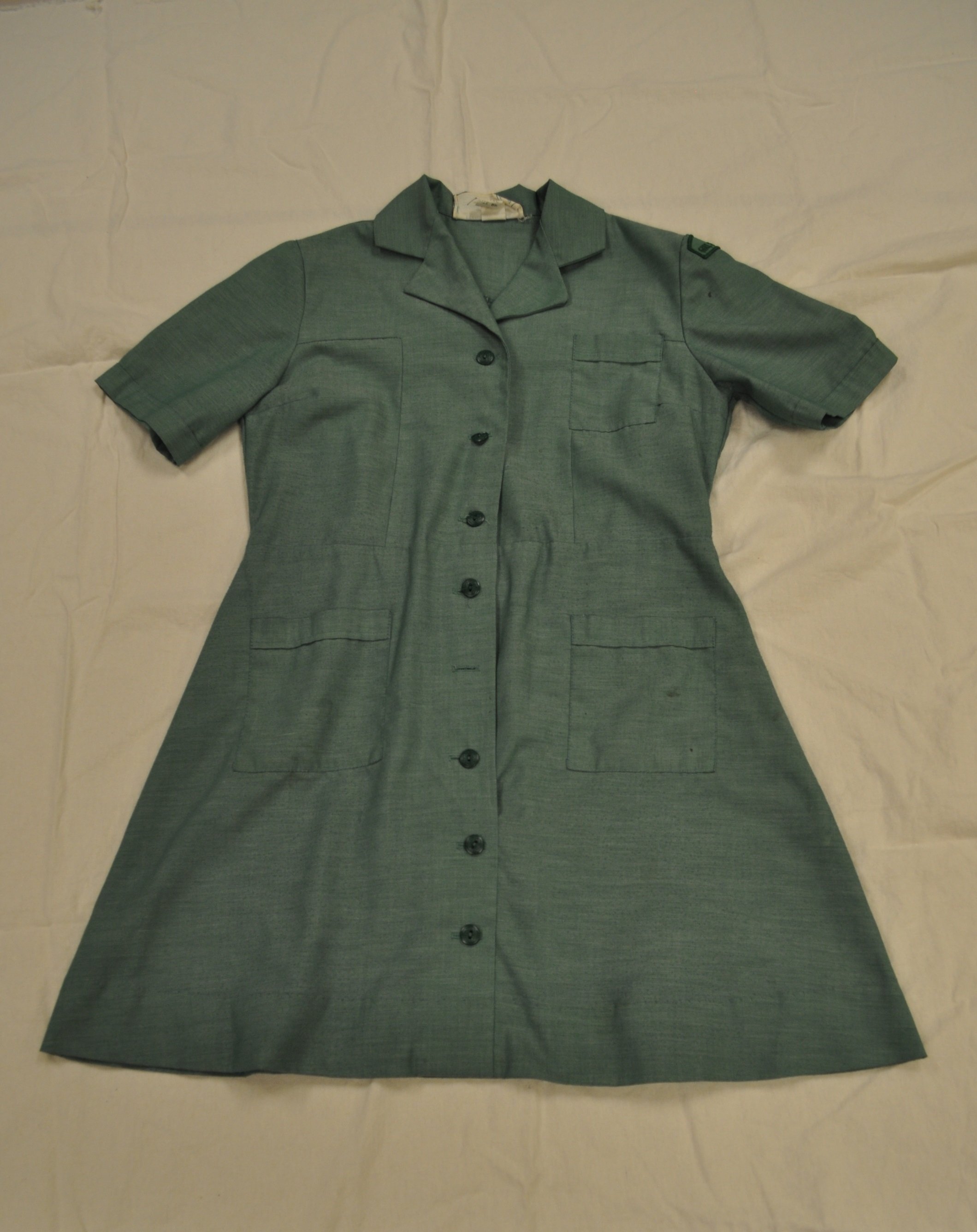
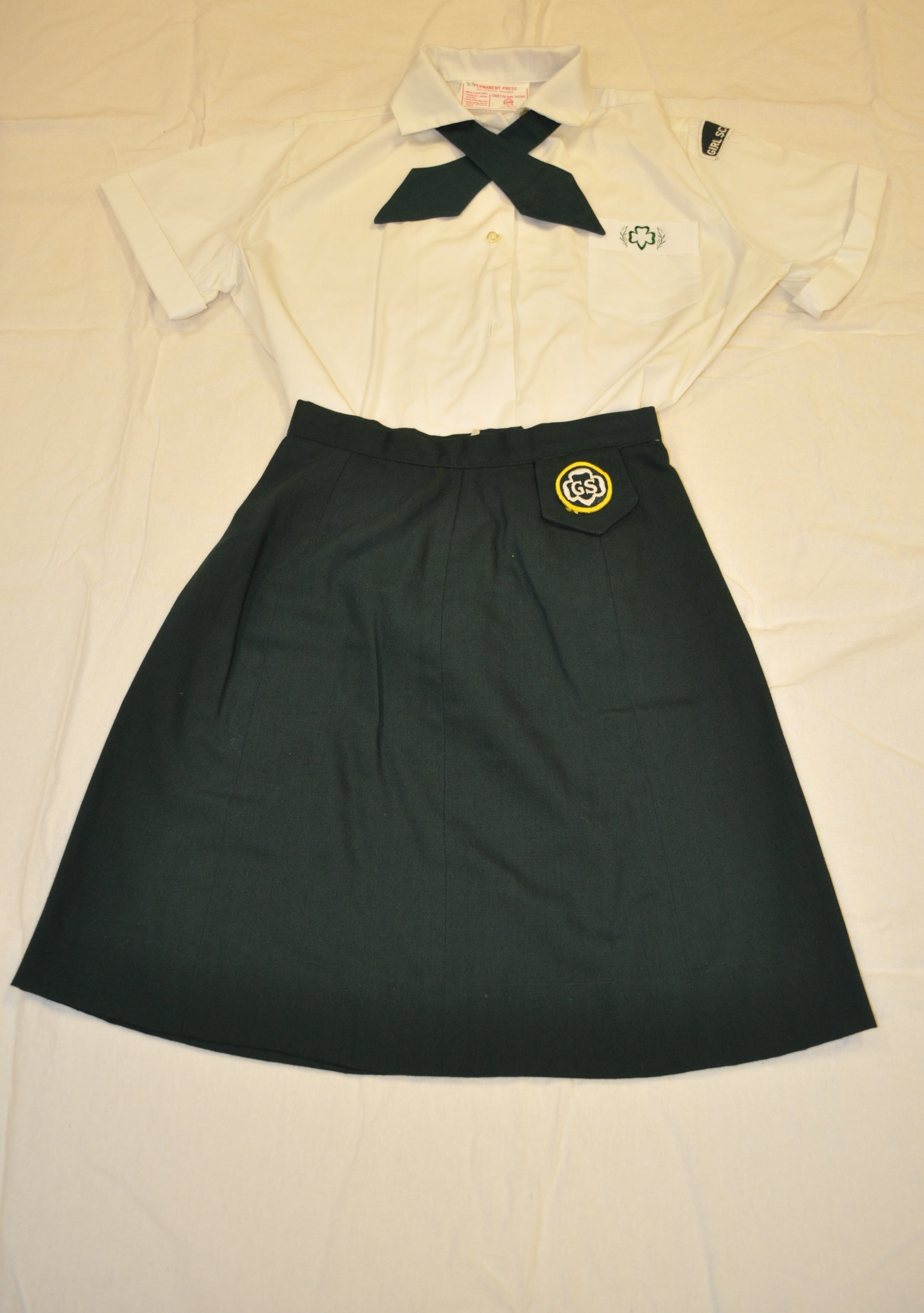
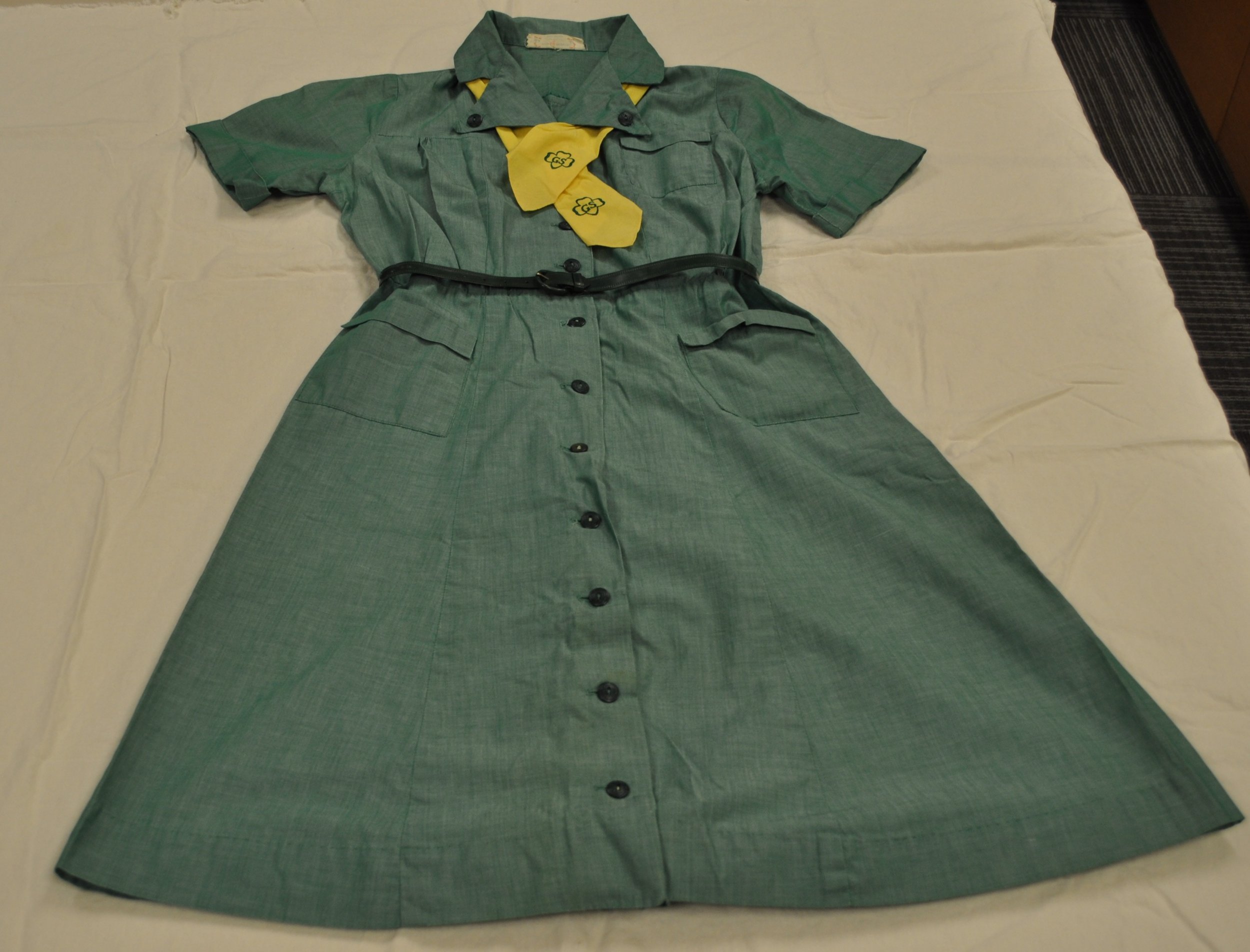
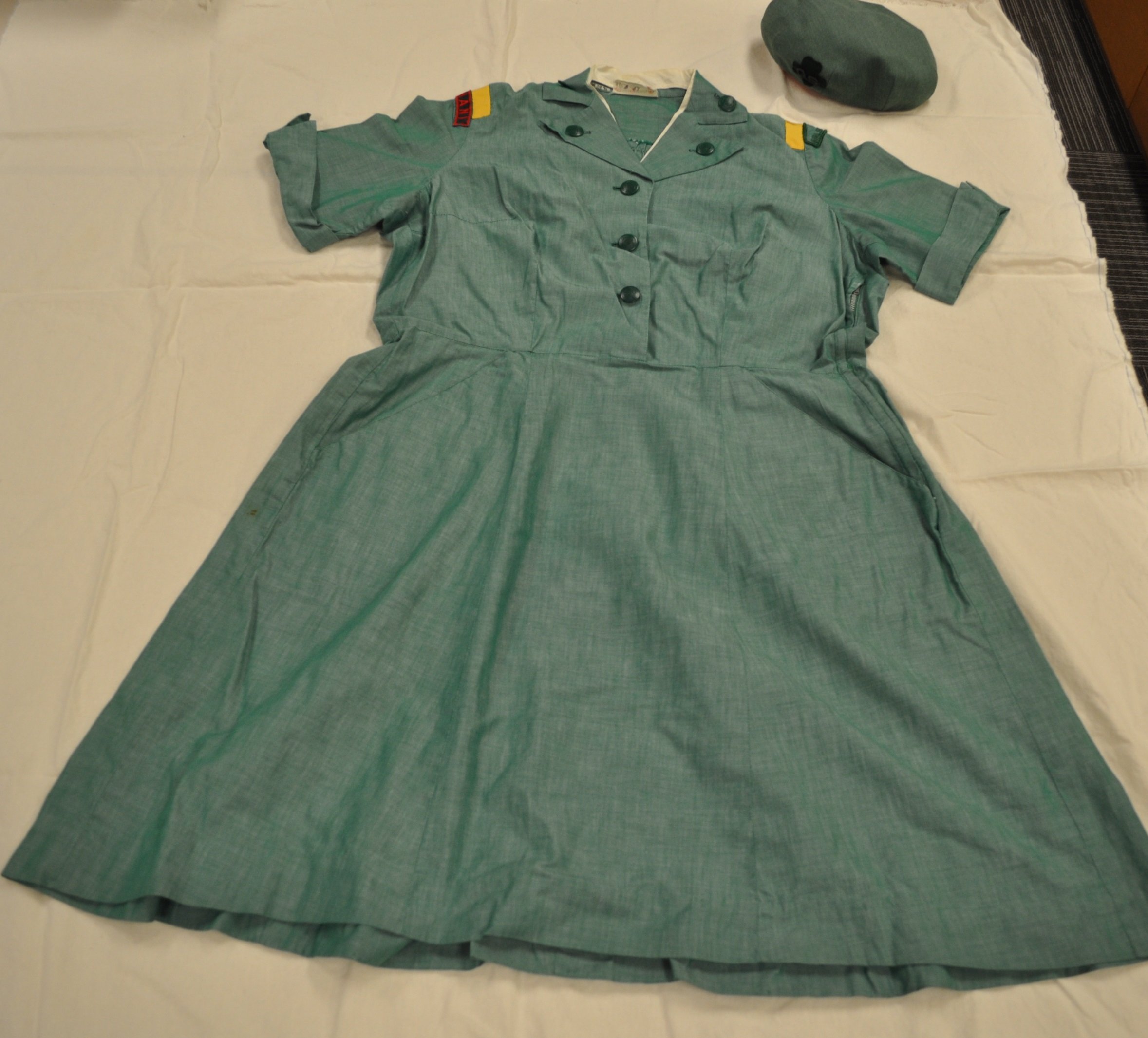
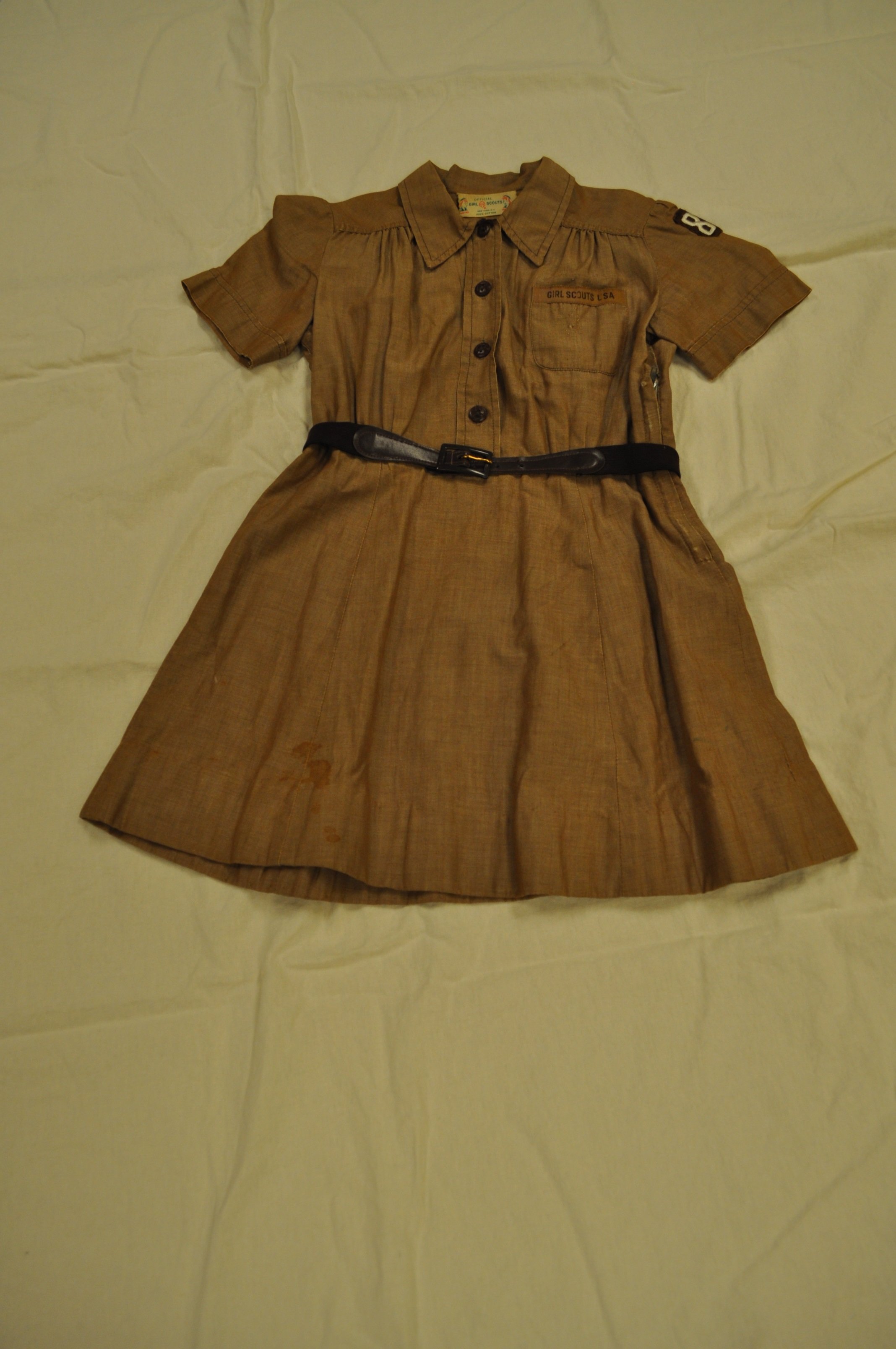
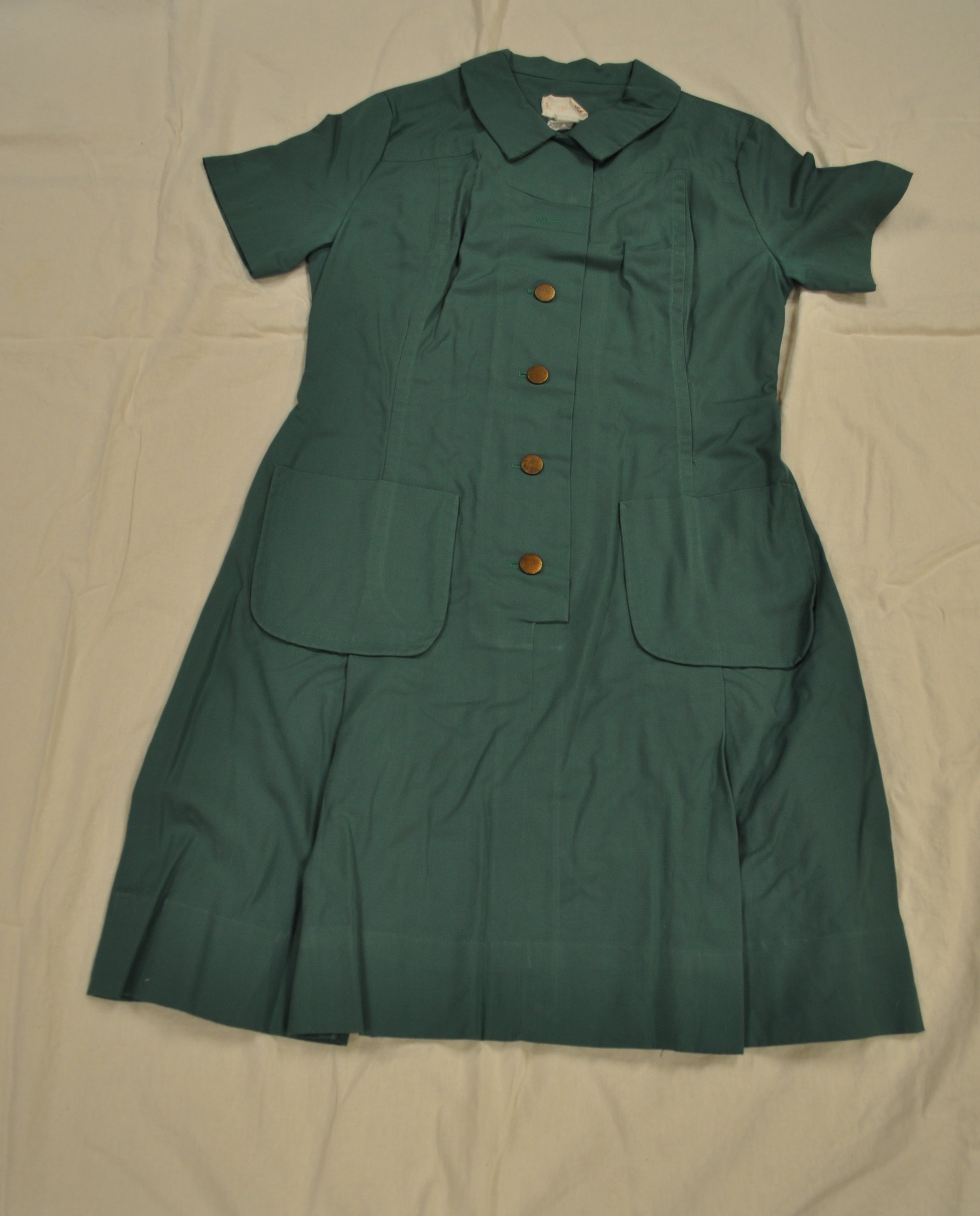
What did Girl Scouts want? “Pants, a uniform with no waistline, big pockets, and a neat, sporty “un-uniform” made of easy-to-care-for fabrics”[1]— and that’s what they would get! The uniforms of the 1970s are drastically different to those of prior decades with a distinctively “groovy” flair and included sets of 5 separates— pants, jumpers, vests, multiple shirts, etc— that could be mixed-and-matched into numerous outfits. Many of the items are made from stretchy, jersey-knit material and— in contrast to prior uniforms— reflect the decades casualwear and sportswear far more than professional styles. This mirrors girl’s increased participation in sports following the passage of Title IX in 1972 which, among its other elements, expanded high school athletic opportunities to include girls.
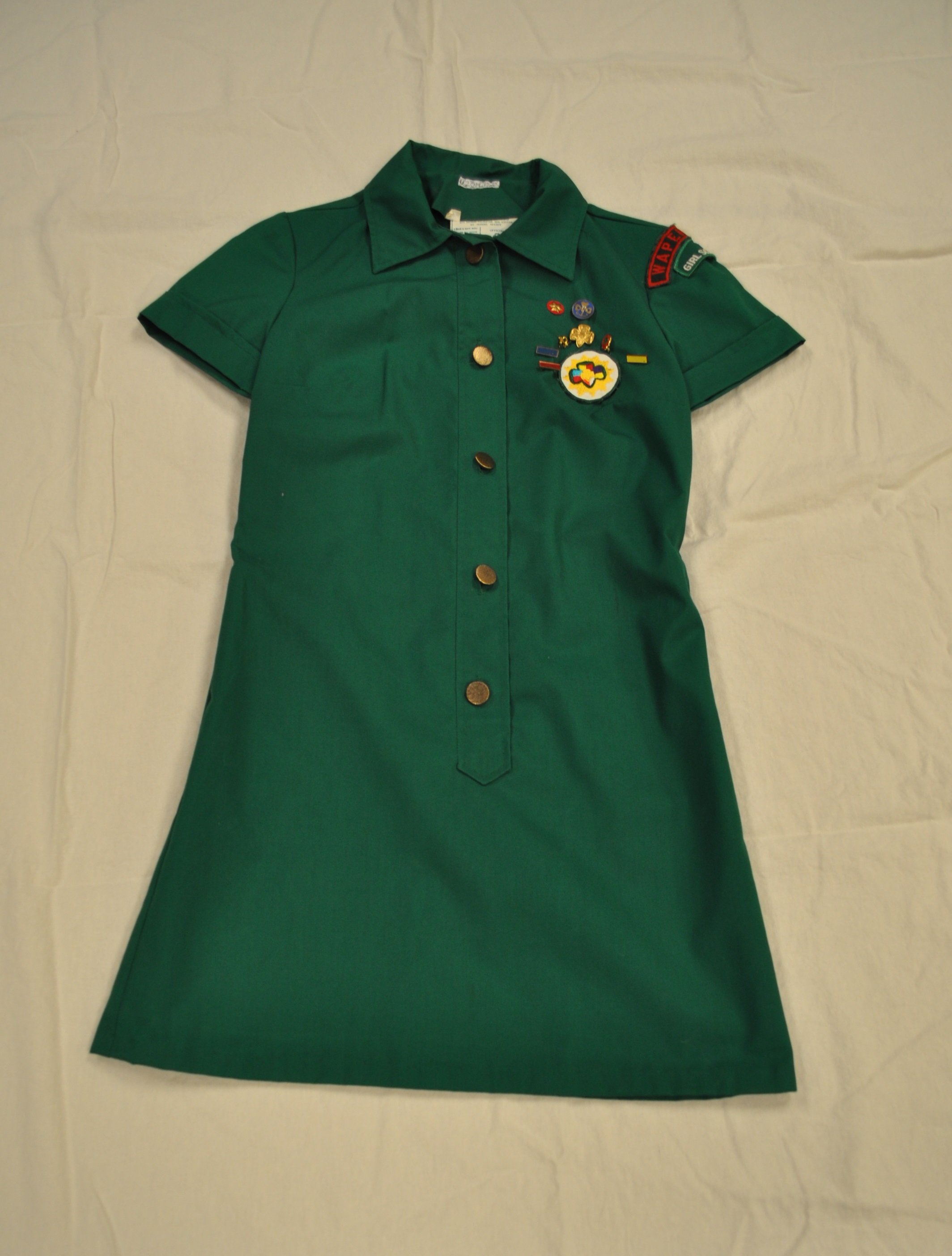
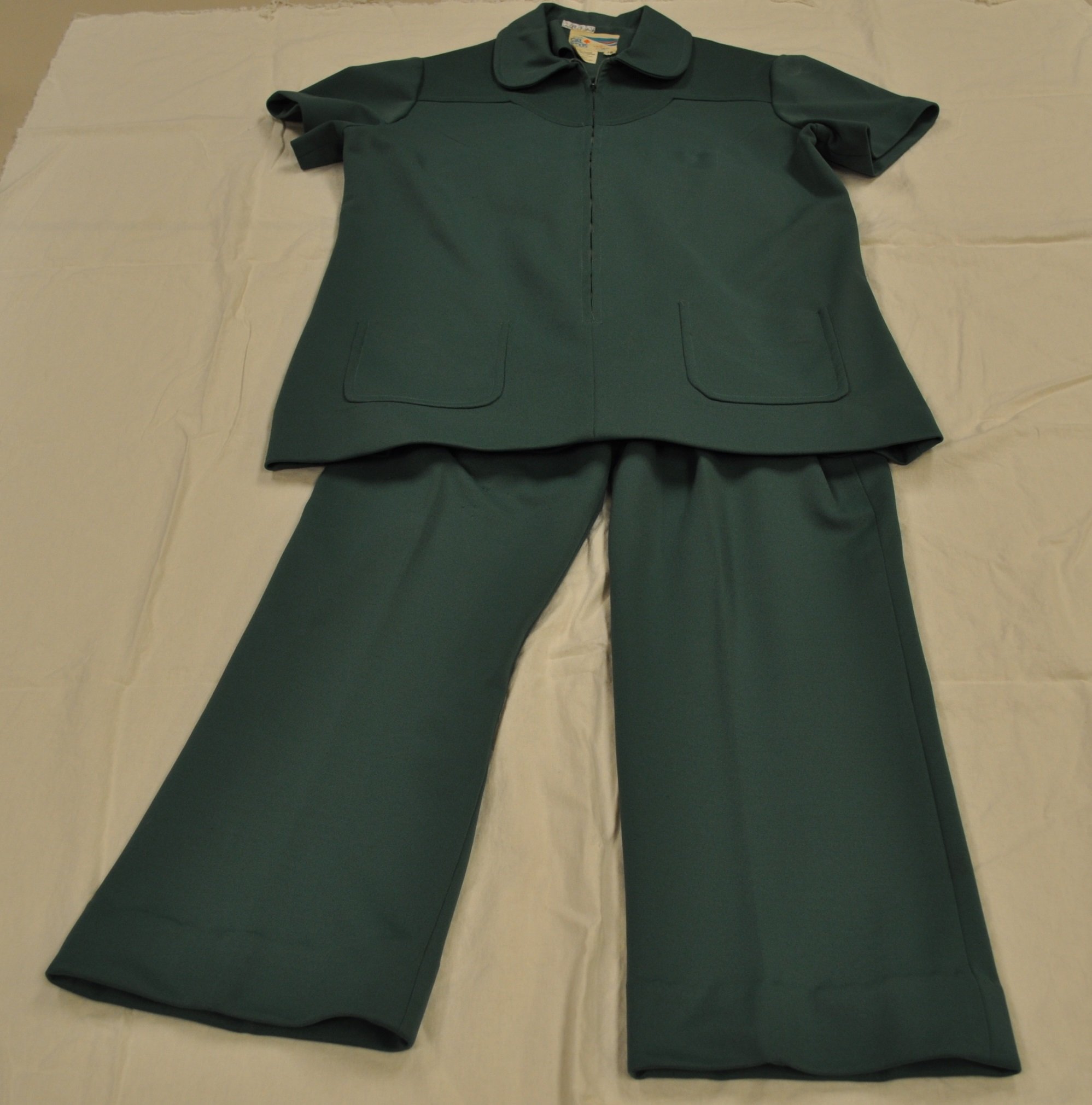
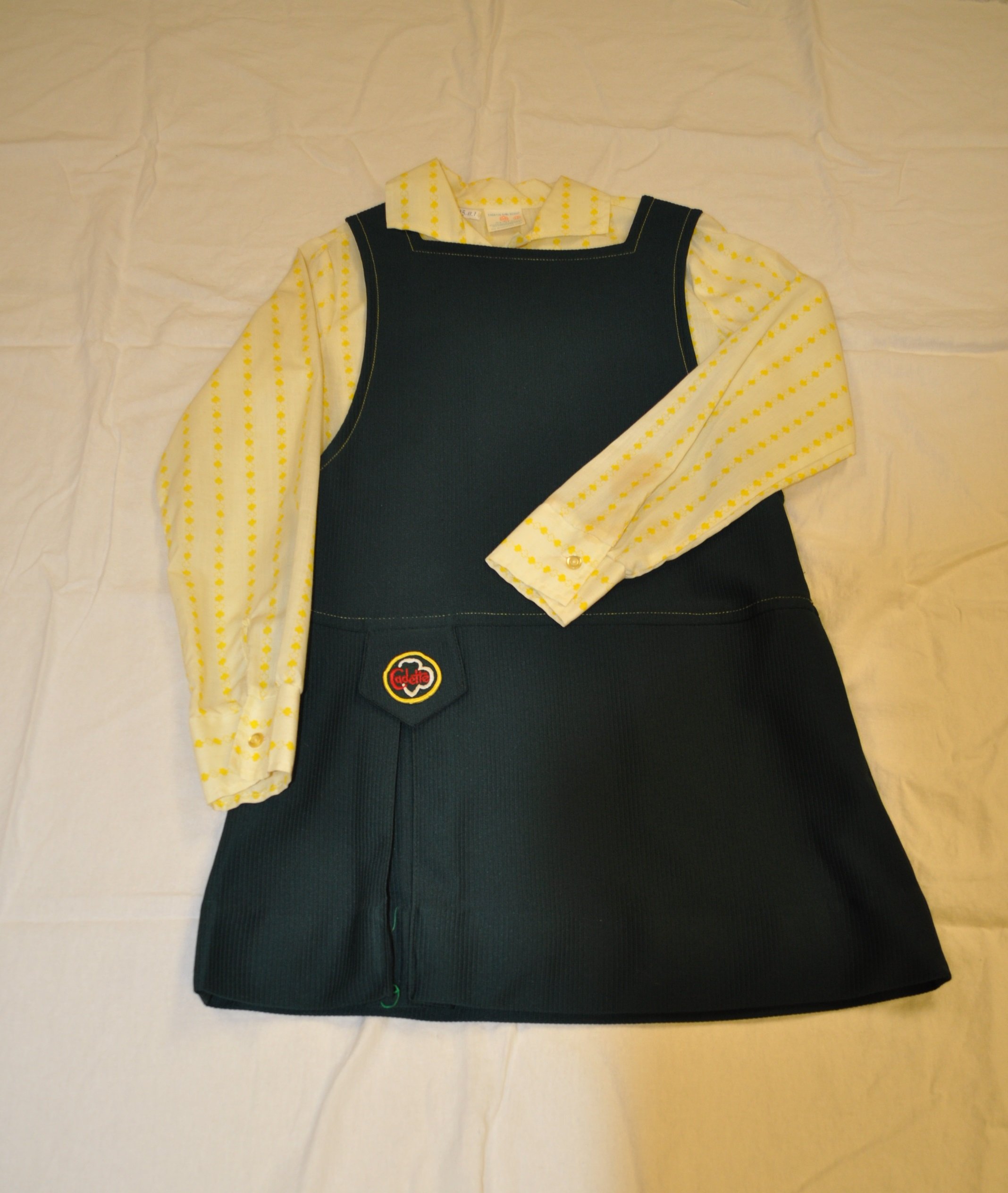
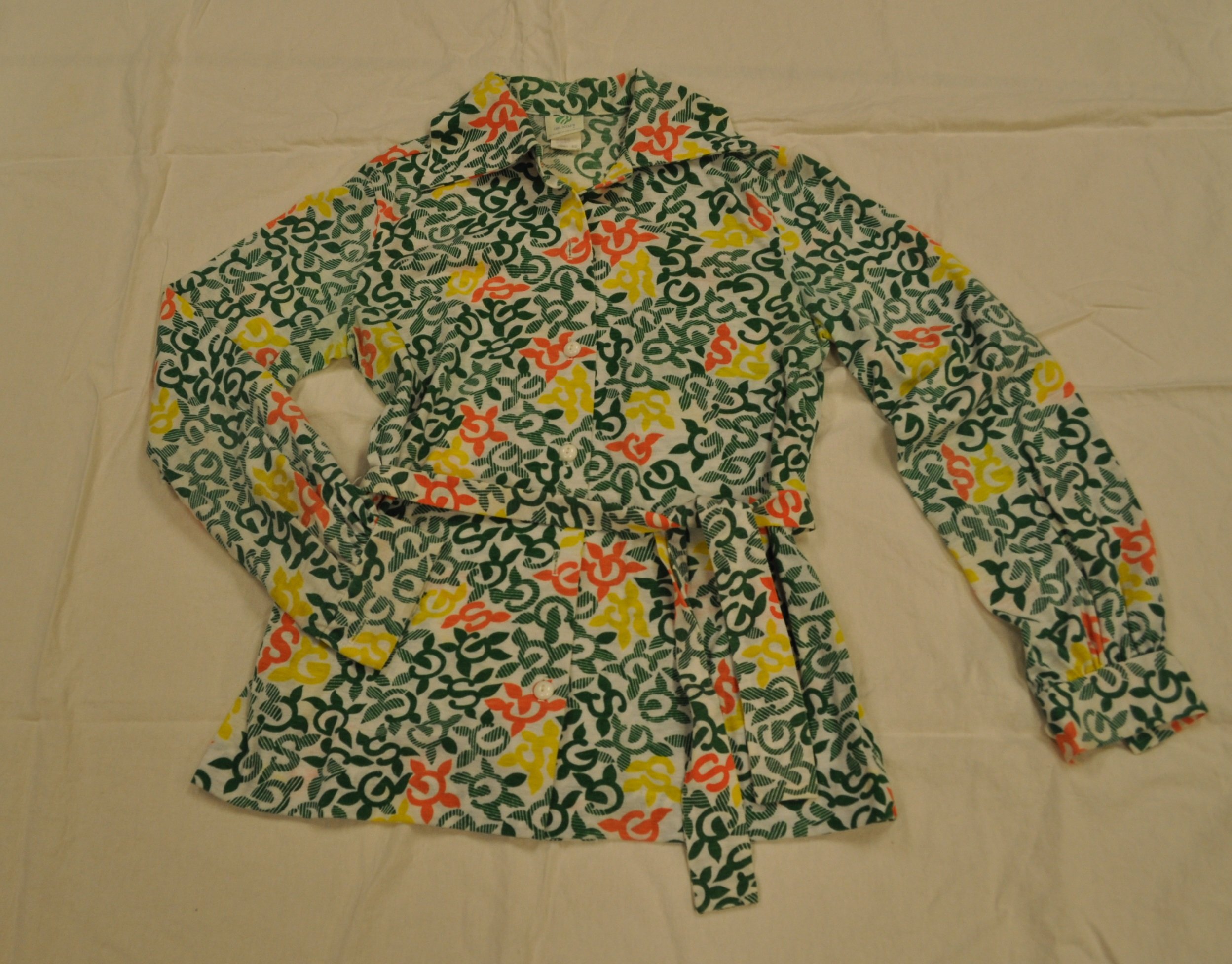
The era of the flashy, trendy Girl Scout uniform extended into the 1980s with styles changing once again to match the fashion of the decade. Kelly green was the color of choice; waistcoats, pleated skirts, and blazers (for troop leaders) reflected the rapidly growing “power dressing” trend. Uniform catalogs of the time also feature athletic uniforms with Girl Scout branded shorts, T-shirts, and (oh so fashionable) polo shirts— pictured with the collars popped, of course. This return to the aesthetic of “professionalism” in the girls’ uniform alongside the continued emphasis on sports and physical activity point to the “you can have it all” attitude about women’s participation in the paid work force simultaneously with work and leisure in the home.
Although the most recent Girl Scout uniform in Minnetrista’s collection was worn until 1986, the uniforms have continued to change alongside the shifts in fashion and in the priorities of the Girl Scouts organization. The most recent major shift was the move to an “un-uniform” in 2008— a sash, vest, or smock depending on age worn over a white shirt and khakis for formal events or any clothes for other activities. The goal of this change was to make Girl Scouts more financially accessible by minimizing the cost of purchasing a uniform and utilize clothing girls are more likely to already own.
Today, Girl Scout uniforms maintain the “minimalist” style of the 2008 change while incorporating garments with references to the “retro” uniforms, such as offering shirts with bandanas/neckerchiefs in the style of the mid-century uniforms. Where’s the Girl Scout uniform going next? Only time will tell.
